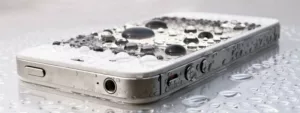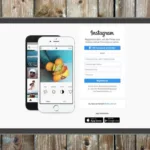Devices like tablets, smartphones and smartwatches are all a fairly hefty financial investment, and therefore something most people really want to keep in great condition for as long as possible. Unfortunately even with careful use items like this with screens are vulnerable to scratches, knocks, and scuffs which either spoil the overall look or interfere with using the device properly.
Keys and other items in bags with loose, unprotected devices are common culprits when it comes to scratched screens, and even a gentle knock could crack the screen if it is not protected. Replacing a smartphone screen can easily cost a few hundred pounds; never mind what it would be for a replacement tablet screen. Who need that kind of expense?
To try to avoid this it is sensible to invest in some kind of screen protection, as even if you have insurance for your watch, phone or tablet making a claim for damages could well push your premium up when you renew the policy. Insurance is great for serious damage or if your device is stolen, but with a decent form of screen protection you should be able to avoid many of the typical problems unprotected devices can suffer.
The big question is – what type of screen protection is the best? Here we look briefly at both the traditional tempered glass type, and the innovative new product on the scene – Liquipel Liquid Glass Screen Protector; investigating several aspects of each to present the information you need to make a good choice.
Traditional tempered glass screen protectors
Many of us are familiar with tempered glass through its use in things like shower doors or car windows, so how does it fare when used as a screen protector for your precious smartphone, tablet or similar device?
The good points
- It’s strong.
- It’s safe. If broken it doesn’t shatter but crumbles.
- It’s scratch resistant.
- It doesn’t interfere with reading the screen on your device.
- It works fine with touchscreens.
The negatives
- Although generally strong if the edges of the tempered glass get damaged, say by a hard knock or if the device is dropped then the rest of the protective screen is a sitting time bomb – the physics of its make up mean it could eventually (and with no warning), shatter. This is especially common in older or unregulated products, so be wary of unknown brands.
- Tempered glass protector screen are a lot more expensive than another type.
- They are generally bought to fit a particular device, so there’s no flexibility between brands and types of devices.
Liquipel Liquid Glass screen protector
Unlike tempered glass this product is specially designed to do the job you buy it for – to cover and protect the screens of your precious devices. Its innovative use of nanotechnology offers full protection from minor and everyday damage to all devices, whatever model or brand they are.
Liquipel Liquid Glass’s good points
- It’s very easy to apply.
After a little preparation you simply wipe it on, no need to worry about bubbles or making things fit. It provides pretty much instant cover which lasts for at least a year, giving you peace of mind that the risk of annoying smudges, fingerprints, scratched and small knocks won’t be putting your device out of action, or racing up a big repair bill. Parent will especially appreciate the joy of less fingerprints on popular devices their children own.
- It’s hygienic.
The screen has special antibacterial qualities which resist the dirt and germs our devices come into contact with everyday.
- It’s guaranteed
Liquipel Liquid Glass comes with a full one year guarantee. If the screen of your protected device is broken during this period you get a repairs covered up to $100 with no hassles.
- The price tag.
Not only is Liquipel Liquid Glass a whole lot cheaper than tempered glass, it also trounces the price tags on its closest liquid glass competitors. Customers enjoy great value without compromising on quality.
- It’s flexible.
So your family has three tablets, five smartphones and a watch with a screen between them? No worries. You don’t need to spend extra cash buying tempered glass protectors specially designed for each individual type of device – Liquipel Liquid Glass can be used on them all!
- It’s tasteful
Nobody can tell you are using Liquipel Liquid Glass just by looking. It really doesn’t change the way your devices screen appears at all.
- It’s a great money saver
Not only does Liquipel Liquid Glass involve a much smaller initial layout to protect your devices, it offers more in potential savings as you should be able to avoid huge repair bills, or hikes in insurance premiums because you needed to claim for an avoidable problem. (Plus think about how much grief you get from teenagers who think the world is ending when they are without a device for a while. If you can avoid that it’s worth its weight in gold!)
The negatives
There really aren’t any obvious minus points to make about
Liquipel Liquid Glass. It’s the clear leader in the liquid glass field, and offers so much more than perhaps some other providers can. With its easy application 9H sapphire hardness level, and invisible but constant protection it makes sense to go straight for a product you can be sure will deliver exactly what you need, and at a great price too.
Whichever you feel is the best type of screen protector for you it is important to get something. This is definitely a situation where a little effort and expense early on can save lot of stress and expense down the line.








